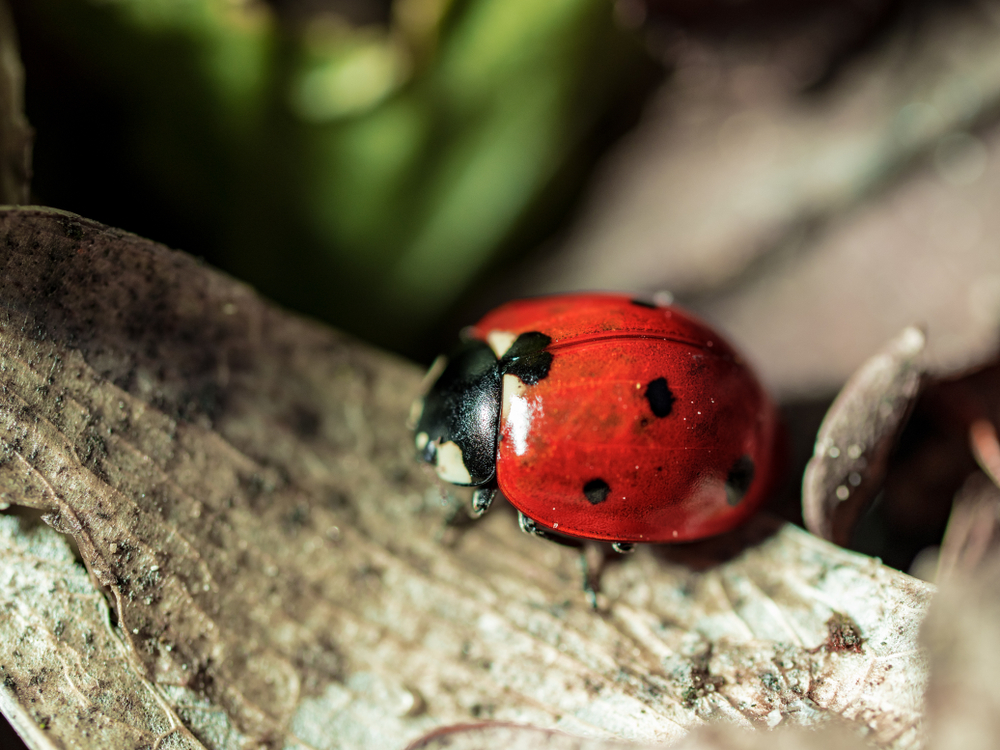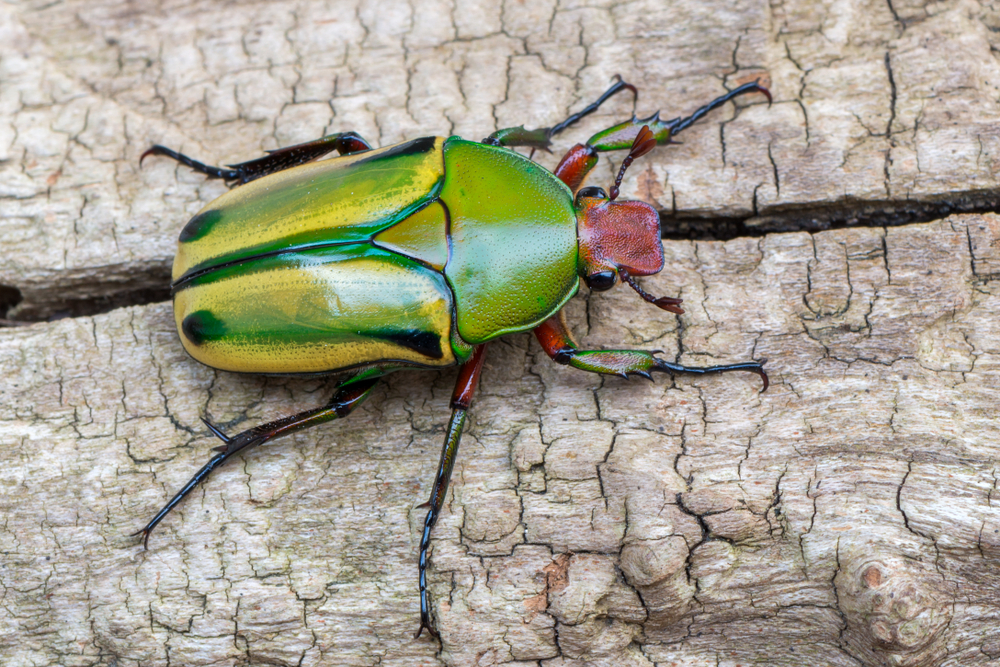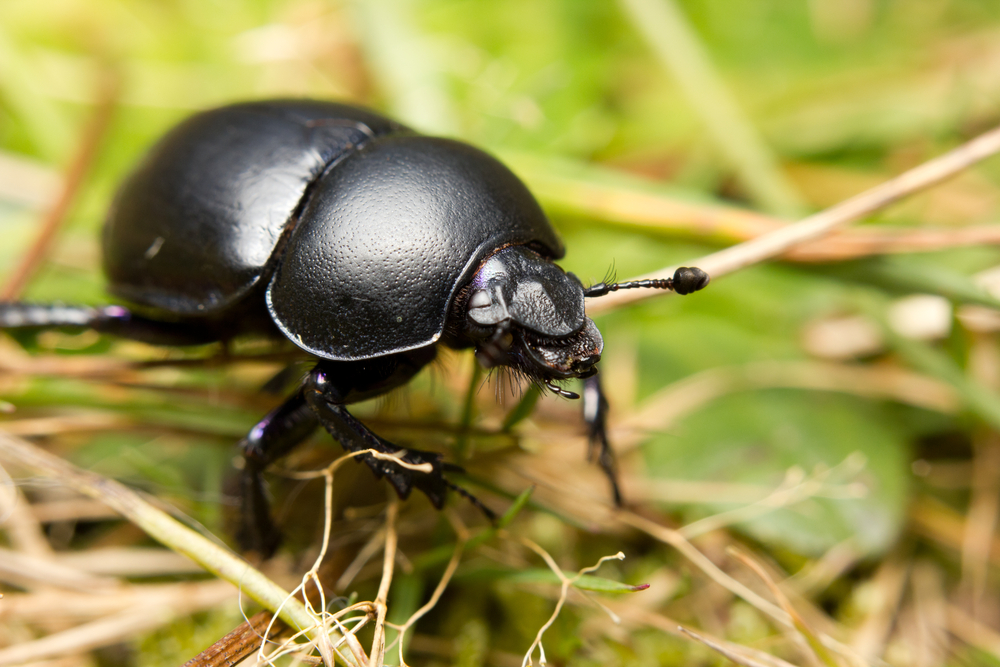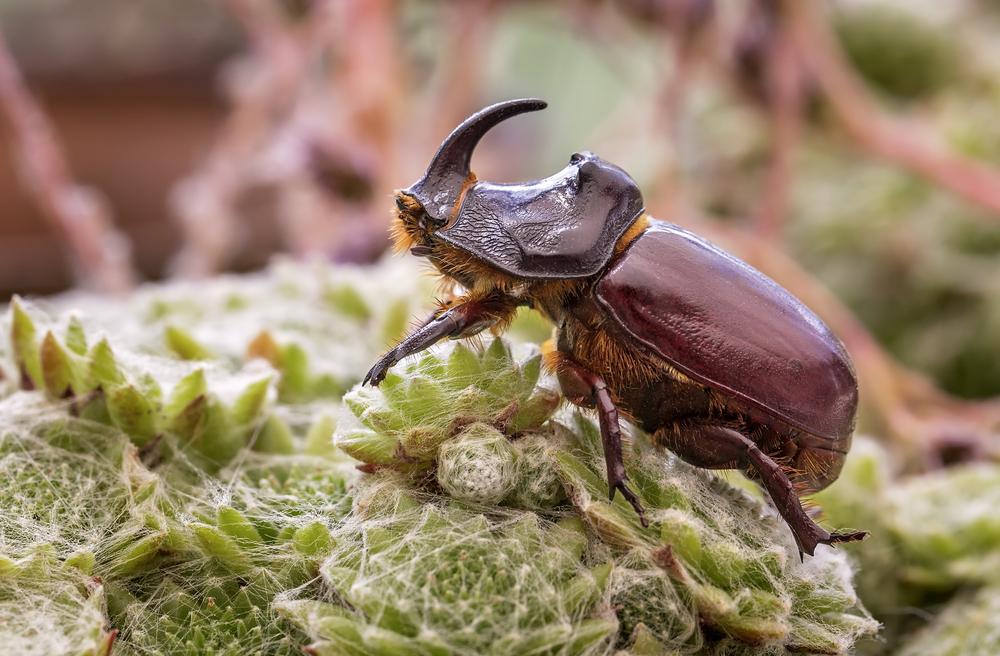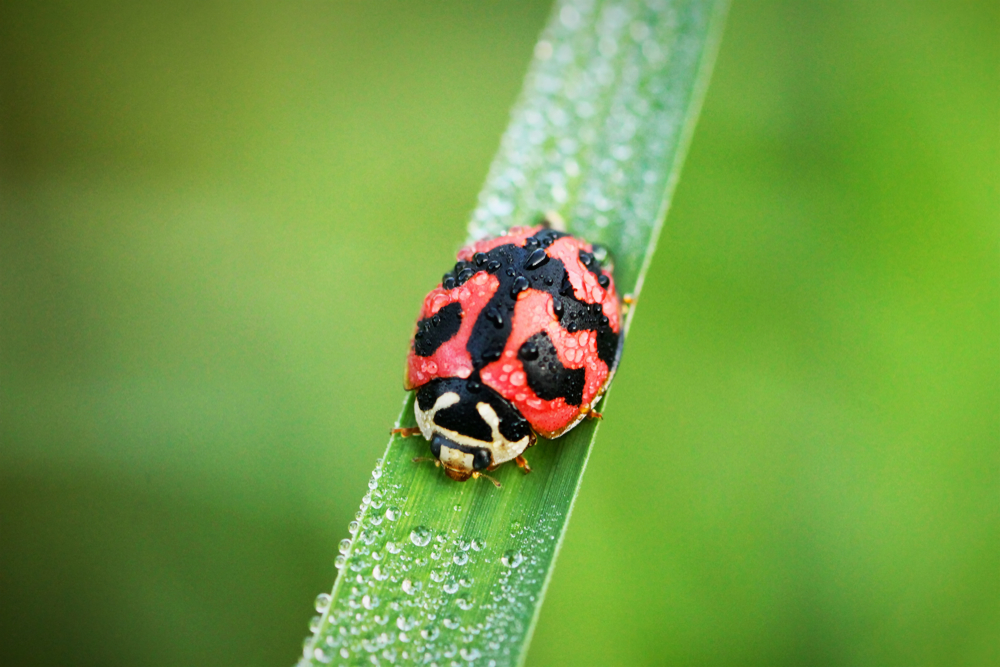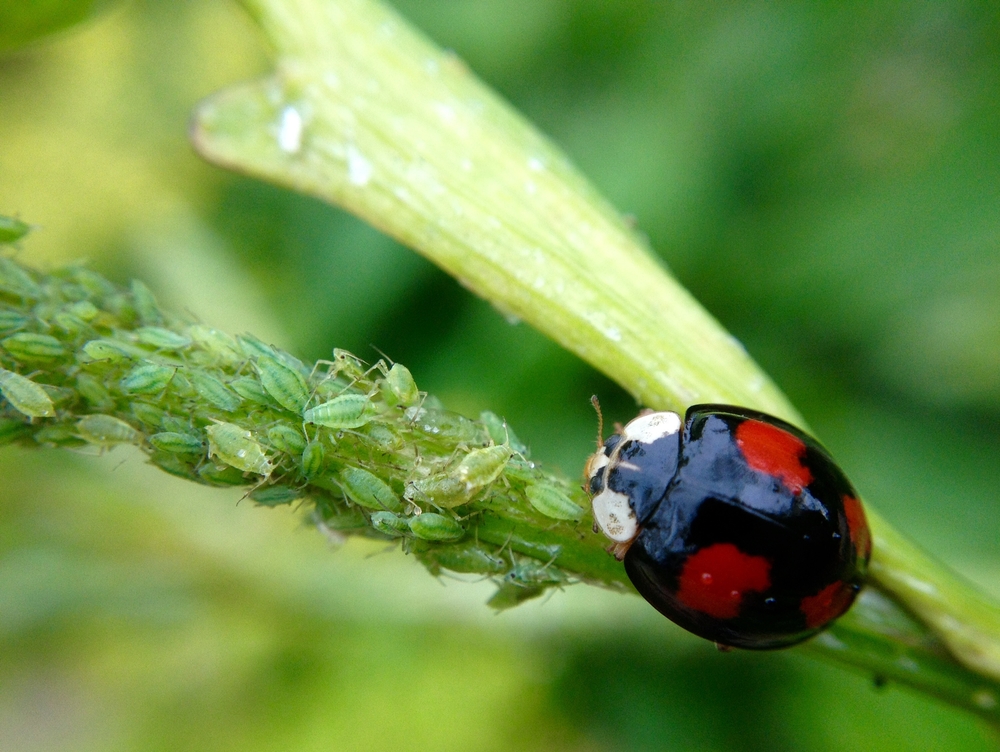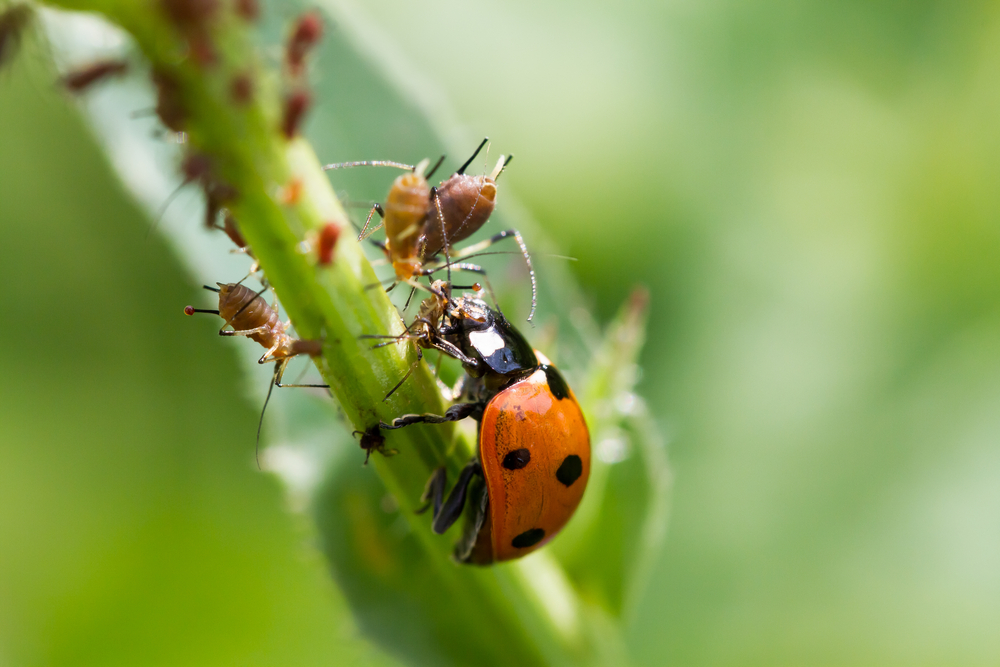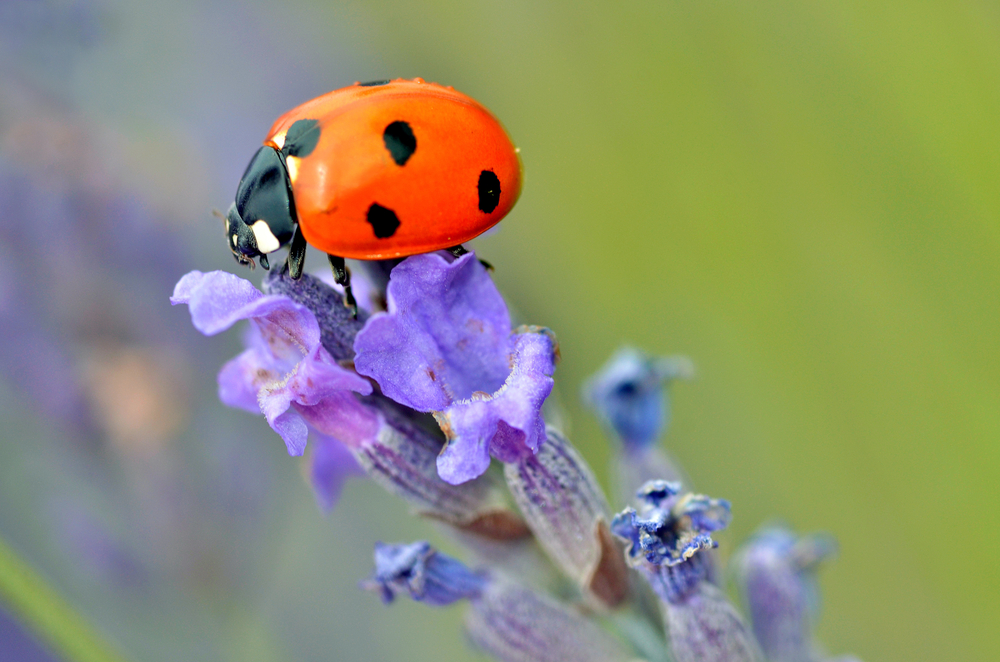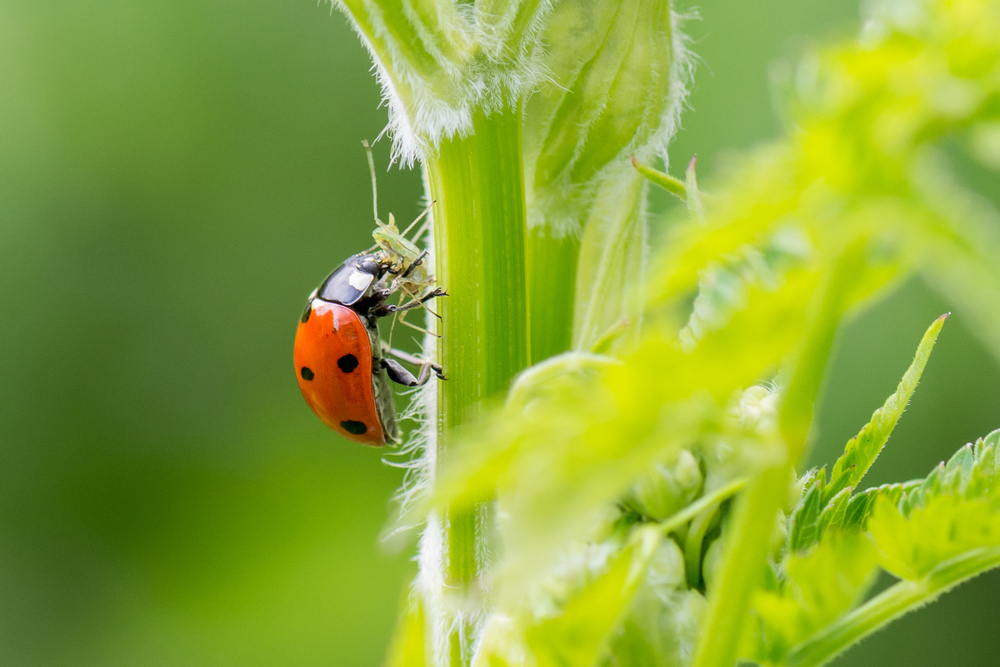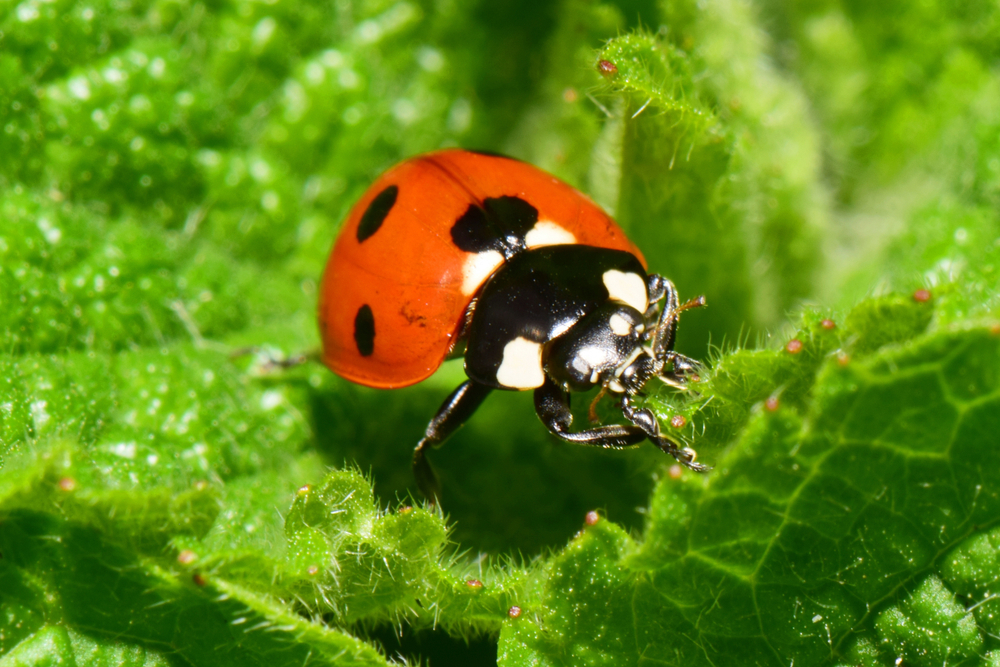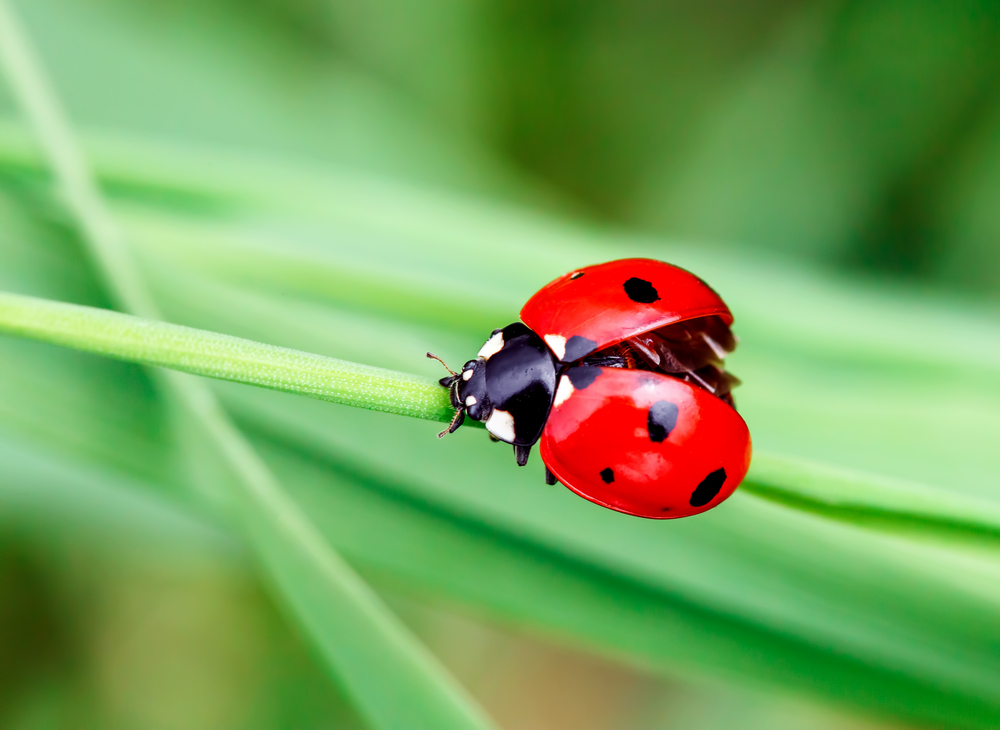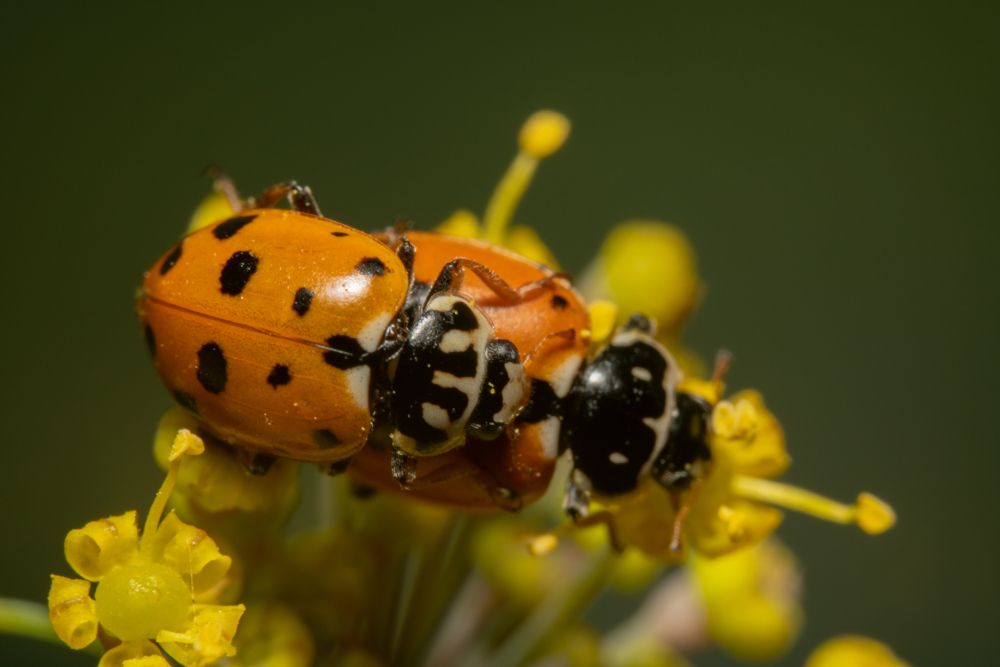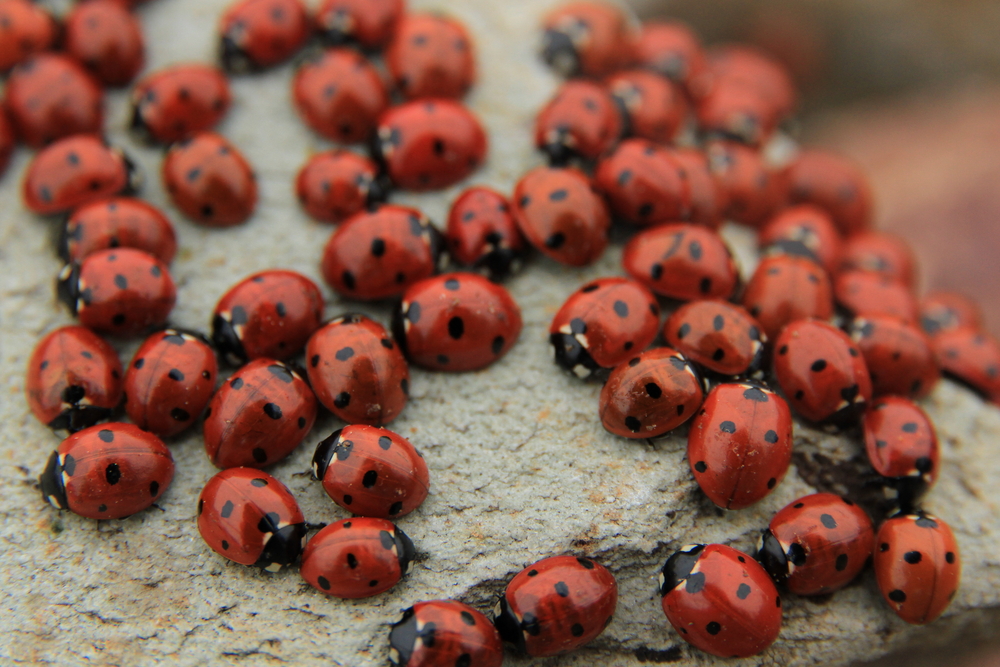There are over 5,000 species of ladybugs, also known as ladybirds or lady beetles, found worldwide, with various colors and spot patterns.
About
The Ladybug, scientifically known as Coccinellidae, belongs to the Animal Kingdom, within the class Insecta. It is a member of the family Coccinellidae, which includes thousands of species worldwide. Ladybugs are small beetles known for their colorful and spotted appearance, typically ranging from red to orange or yellow, with black spots. They have a round or oval-shaped body and short legs.
These beetles are beneficial insects, often seen in gardens and agricultural fields where they prey on aphids, mites, and other pests, making them valuable natural pest controllers. Ladybugs undergo complete metamorphosis, starting as eggs laid on plants, then hatching into larvae before pupating and emerging as adults. They have a relatively short lifespan, typically lasting a few weeks to several months.
Conservation Concerns
Ladybugs are generally not considered at risk, as many species are widespread and abundant. However, some specific species or populations may face threats due to habitat loss, pesticide use, and climate change. Loss of natural habitats and the widespread use of pesticides in agriculture can negatively impact ladybug populations by reducing food sources and breeding sites.
Despite their overall resilience, certain factors can lead to declines in ladybug diversity and abundance, which could have cascading effects on ecosystems where they play essential roles as predators of crop pests and contributors to biodiversity. As of now, ladybugs are not formally assessed on the IUCN Red List, but monitoring their populations and addressing potential threats is crucial for their long-term conservation.
Physical Characteristics
Ladybugs, also known as ladybirds or lady beetles, belong to the family Coccinellidae. These small beetles are well-loved around the world for their colorful appearance and appetite for plant pests like aphids. Ladybugs are found in various habitats, including gardens, forests, and grasslands. There are thousands of ladybug species, displaying a range of colors and patterns, but they share common physical characteristics.
Size
- Body Length: Ladybugs are generally small, with body lengths ranging from 0.03 to 0.6 inches (1 to 10 millimeters). The most common species measure about 0.2 to 0.3 inches (5 to 8 millimeters).
Physical Characteristics
- Body Shape: Ladybugs have a dome-shaped, rounded body that is almost hemispherical, helping to protect them against predators.
- Color and Patterns: They are perhaps best known for their distinctive bright red or orange color with black spots, although they can also be yellow, brown, black, or even pink with various patterns of spots, stripes, or no markings at all. These colors and patterns can serve as a warning to predators about their unpleasant taste.
- Head: The head is small with a pair of compound eyes, and mouthparts adapted for chewing. Ladybugs have short antennae that help them sense their environment.
- Wings: Ladybugs have two pairs of wings. The hard, outer wings (elytra) cover the fragile, flying wings beneath. The elytra protect the ladybug when it is not flying and give it its characteristic coloration. When the ladybug flies, the elytra open to reveal the thin, membranous wings used for flight.
- Legs: They possess six short legs that can retract under their body when they are flying or feel threatened. The legs are equipped with tiny claws at the ends that help them cling to surfaces.
Behavior and Adaptations
Ladybugs are beneficial insects in many ecosystems, known for their role in controlling pest populations. They have several defense mechanisms, including their warning coloration, the ability to play dead, and the secretion of a foul-tasting fluid from their joints when threatened.
The widespread appreciation for ladybugs is not just due to their attractive appearance and harmless nature to humans but also their voracious appetite for aphids and other pest insects, making them a natural ally for gardeners and farmers alike. Their physical characteristics have been finely tuned through evolution to suit their ecological niche, making them one of the most recognizable and favored insects worldwide.
Reproduction
Ladybugs have an interesting and efficient reproductive cycle that includes distinct stages, from egg to larva, pupa, and adult. Here’s an overview of their reproductive process:
- Mating: Adult ladybugs mate in the spring and early summer. Males typically court females by climbing on their backs and tapping them with their antennae. After mating, females lay eggs.
- Egg-Laying: Female ladybugs lay clusters of tiny, oval-shaped eggs on the undersides of leaves, usually choosing sites where aphids or other prey are abundant. The number of eggs a female can lay varies widely among species and depends on factors such as food availability and environmental conditions. A female can lay hundreds of eggs over her lifetime.
- Gestation Period: The gestation period, or the time it takes for the eggs to hatch, is relatively short. Depending on the species and environmental conditions like temperature and humidity, the eggs usually hatch within a few days to a couple of weeks.
- Larval Stage: The larvae that emerge from the eggs are elongated and bumpy, with a somewhat alligator-like appearance, quite different from the adult form. They are voracious predators, feeding primarily on aphids and other soft-bodied insects. The larval stage involves several molts and typically lasts a few weeks to a month.
- Pupation: After reaching a certain size, the larvae attach themselves to a leaf or other surface and enter the pupal stage. During this stage, the ladybug undergoes metamorphosis, transforming from the larval form into an adult.
- Emergence of Adults: After the pupal stage, which can last about a week or so, the adult ladybug emerges. The new adults are soft and pale, but within a few hours, their exoskeleton hardens, and they gain their characteristic coloration.
The entire life cycle, from egg to adult, typically takes about four to eight weeks, depending on environmental conditions and the species. Ladybugs are known for their ability to reproduce quickly and in large numbers, which, combined with their appetite for pests, makes them invaluable for natural pest control.
Lifespan
The lifespan of ladybugs can vary based on species, environmental conditions, and whether they are in the wild or in captivity. Generally, ladybugs have a relatively short life cycle, but they are efficient reproducers and can have multiple generations within a year.
Lifespan
- In the Wild:
- Ladybugs typically live for about one year in the wild, though this can vary. Their life cycle includes the stages of egg, larva, pupa, and adult. The adult stage, which is what we most commonly recognize as a ladybug, usually lasts for a few weeks to months. During this time, they feed, mate, and lay eggs.
- Some species of ladybugs can enter a state of dormancy, or diapause, during the winter, which allows them to survive in colder climates and can extend their lifespan.
- In Captivity:
- In captivity, with optimal conditions of temperature, humidity, and a steady supply of food, ladybugs can sometimes live slightly longer than in the wild. The absence of predators and control of diseases also contribute to a longer life.
Biggest Threats
- Habitat Loss: Changes in land use, urban development, and agriculture can reduce the availability of suitable habitats and food sources for ladybugs.
- Pesticides: Chemicals used in agriculture and gardens can be harmful to ladybugs, either directly or through the reduction of their food sources (like aphids).
- Climate Change: Altered weather patterns and temperatures can impact ladybugs’ life cycle and distribution, potentially affecting their survival and reproduction.
- Invasive Species: Introduction of non-native species can lead to competition for food or direct predation. For instance, the invasive harlequin ladybug has been a threat to native species in various regions.
Ladybugs play a vital role in controlling pests in agriculture and gardens, making them beneficial for both the environment and the economy. Protecting their habitats and ensuring the availability of natural food sources are important for maintaining their populations and the ecological balance they help sustain.
Eating Habits
Ladybugs are best known for their diet of aphids, which makes them highly beneficial in gardens and agricultural fields as natural pest controllers. However, their diet can vary based on species and availability of food sources. Here’s an overview of their eating habits:
- Aphids and Other Small Insects:
- The primary food source for many ladybugs is aphids, which are small, sap-sucking insects that can be detrimental to plants. Ladybugs may also feed on other soft-bodied insects like scale insects, mites, and insect eggs.
- A single ladybug can consume up to thousands of aphids in its lifetime, significantly helping to control aphid populations and prevent plant damage.
- Pollen and Nectar:
- Some species of ladybugs also supplement their diet with pollen and nectar, especially when prey insects are scarce. This adaptation allows them to survive in various conditions and makes them important pollinators in some ecosystems.
- Fungi:
- Certain species of ladybugs feed on mildew and other types of fungi that grow on plants, helping to control these plant diseases.
- Method of Gathering Food:
- Ladybugs are skilled hunters, using their keen sense of smell to locate aphids and other prey. They are also highly mobile, able to fly and move quickly to find food.
- Their sharp mandibles allow them to grasp and consume their prey effectively. Ladybugs are particularly voracious feeders during the larval stage, consuming large quantities of aphids to support their rapid growth.
Ladybugs’ diet and feeding habits make them an essential component of the ecosystem, providing natural pest control and contributing to the health of plants and crops. Their ability to control pest populations naturally makes them invaluable allies in agriculture and horticulture.
Uniqueness
Ladybugs, or ladybirds, are unique and cherished insects for several reasons, making them stand out in the natural world:
- Distinctive Appearance: Ladybugs are easily recognizable by their vibrant colors and spotted patterns. The bright red, orange, or yellow hues with contrasting spots serve as a warning to predators (aposematism), indicating that they are unpalatable or toxic.
- Beneficial Predator: Ladybugs are renowned for their appetite for aphids and other plant pests, making them a natural and effective means of pest control in gardens and agricultural fields. A single ladybug can consume thousands of aphids in its lifetime, protecting plants from damage.
- Complete Metamorphosis: Ladybugs undergo complete metamorphosis, transforming from egg to larva to pupa to adult. Each stage has a distinct appearance and role in the life cycle, showcasing the adaptability and complexity of these creatures.
- Symbolism and Cultural Significance: Ladybugs are symbols of good luck, prosperity, and protection in many cultures. Their presence is often welcomed and considered a sign of a healthy garden.
- Diverse Species: The family Coccinellidae includes over 6,000 species of ladybugs, each with its own unique characteristics, habitats, and behaviors. This diversity illustrates the adaptability and evolutionary success of ladybugs across various environments.
- Chemical Defense: When threatened, ladybugs can secrete a yellow fluid from their leg joints, which has a bitter taste and deters predators. This defense mechanism, combined with their warning coloration, provides effective protection against being eaten.
- Temperature-Dependent Diapause: In colder climates, ladybugs can enter a state of diapause (a period of suspended development) during winter, allowing them to survive harsh conditions and emerge when the temperature rises and food becomes available.
- Pollination Role: While primarily known as predator of pests, some ladybugs also play a role in pollination, feeding on pollen and nectar when insect prey is scarce.
Ladybugs’ unique combination of aesthetic appeal, ecological significance, and cultural importance makes them one of the most beloved and beneficial insects in the natural world. Their presence is a testament to the intricate balance of ecosystems and the importance of conserving biodiversity.
FAQ’s
1. How many types of Ladybugs are there?
2. What are some of the more popular species of Ladybugs?
Ladybugs, or ladybirds, are beloved beetles known for their bright colors and spots. Here are 10 popular species:
- Seven-Spotted Ladybug: Iconic red with black spots, voracious aphid eater.
- Asian Lady Beetle: Variable colors, invasive, and sometimes known for overwintering in homes.
- Harlequin Ladybird: Highly variable, invasive, outcompetes native species.
- Two-Spotted Ladybug: Red with two black spots, common aphid predator.
- Convergent Ladybug: Red or orange with black markings, preys on aphids and scale insects.
- Eyed Ladybug: Red with black spots and distinctive eyespots on pronotum.
- Pink-Spotted Ladybug: Red or orange with pink spots, often found in gardens.
- Cream-Spotted Ladybug: Cream-colored with black spots, feeds on aphids and mites.
- Twice-Stabbed Ladybug: Orange with two black spots, preys on aphids and scale insects.
- Mealybug Ladybird: Feeds on mealybugs, has a unique appearance with a white waxy covering
Related Family Species
Sources
- Britannica, Ladybug, https://www.britannica.com/animal/ladybug, retrieved January 2024.
- Burnie, David & Wilson, Don, Animal, Smithsonian Institute, Washington DC.
- Hickman et al, Integrated Principle of Zoology, McGraw Hill, Boston.






























































